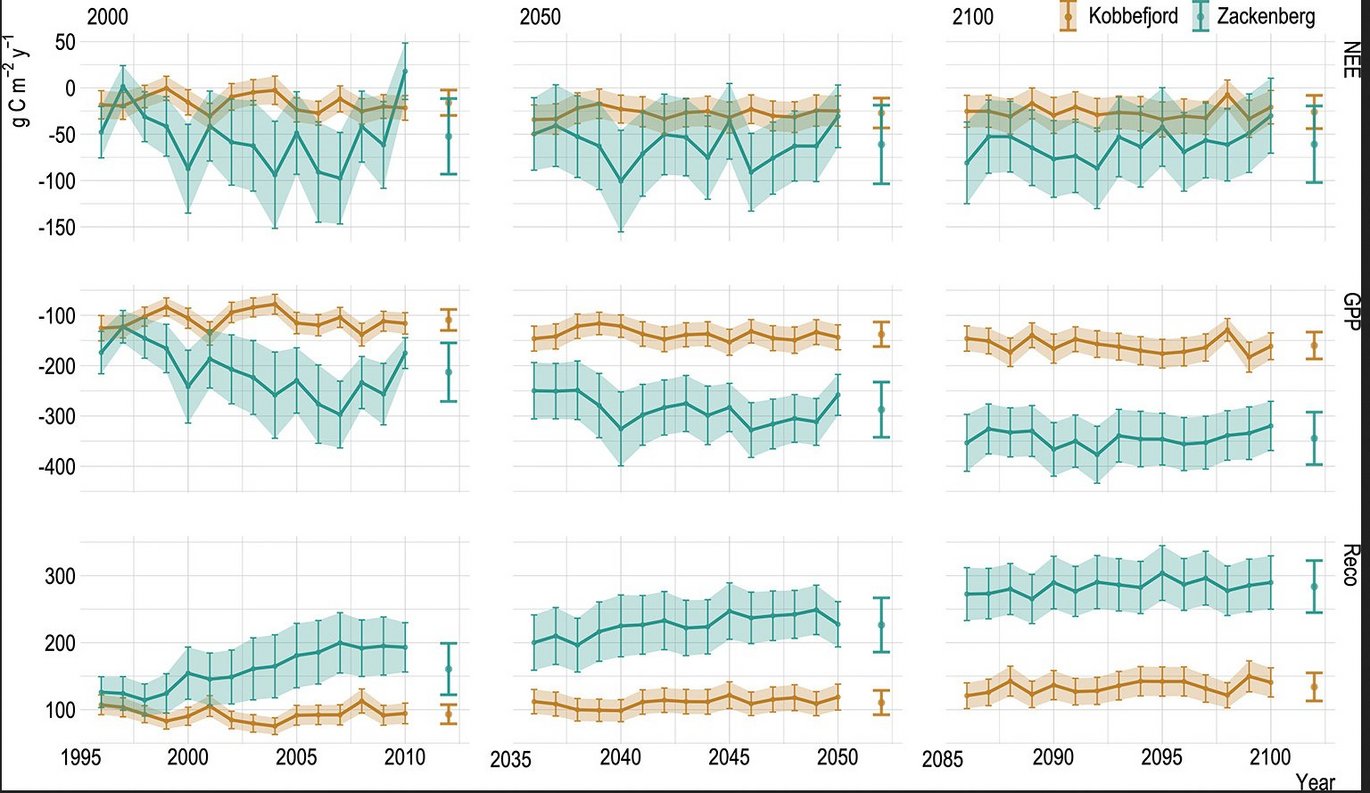The future of tundra carbon storage in Greenland – Sensitivity to climate and plant trait changes
New publication by Efrén López-Blanco, Peter L. Langen, Mathew Williams, Jens Hesselbjerg Christensen, Fredrik Boberg, Kirsty Langley, Torben Røjle Christensen.

Abstract:
The continuous change in observed key indicators such as increasing nitrogen deposition, temperatures and precipitation will have marked but uncertain consequences for the ecosystem carbon (C) sink-source functioning of the Arctic. Here, we use multiple in-situ data streams measured by the Greenland Ecosystem Monitoring programme in tight connection with the Soil-Plant-Atmosphere model and climate projections from the high-resolution HIRHAM5 regional model. We apply this modelling framework with focus on two climatically different tundra sites in Greenland (Zackenberg and Kobbefjord) to assess how sensitive the net C uptake will expectedly be under warmer and wetter conditions across the 21st century and pin down the relative contribution to the overall C sink strength from climate versus plant trait variability.
Our results suggest that temperatures (5–7.7 °C), total precipitation (19–110 %) and vapour pressure deficit will increase (32–36 %), while shortwave radiation will decline (6–9 %) at both sites by 2100 under the RCP8.5 scenario. Such a combined effect will, on average, intensify the net C uptake by 9–10 g C m−2 year−1 at both sites towards the end of 2100, but Zackenberg is expected to have more than twice the C sink strength capacity of Kobbefjord. Our sensitivity analysis not only reveals that plant traits are the most sensitive parameters controlling the net C exchange in both sites at the beginning and end of the century, but also that the projected increase in the net C uptake will likely be similarly influenced by future changes in climate and existing local nutrient conditions. A series of experiments forcing realistic changes in plant nitrogen status at both sites corroborates this hypothesis.
This work proves the unique synergy between monitoring data and numerical models to assist robust model calibration/validation and narrow uncertainty ranges and ultimately produce more reliable C cycle projections in understudied regions such as Greenland.

https://doi.org/10.1016/j.scitotenv.2022.157385